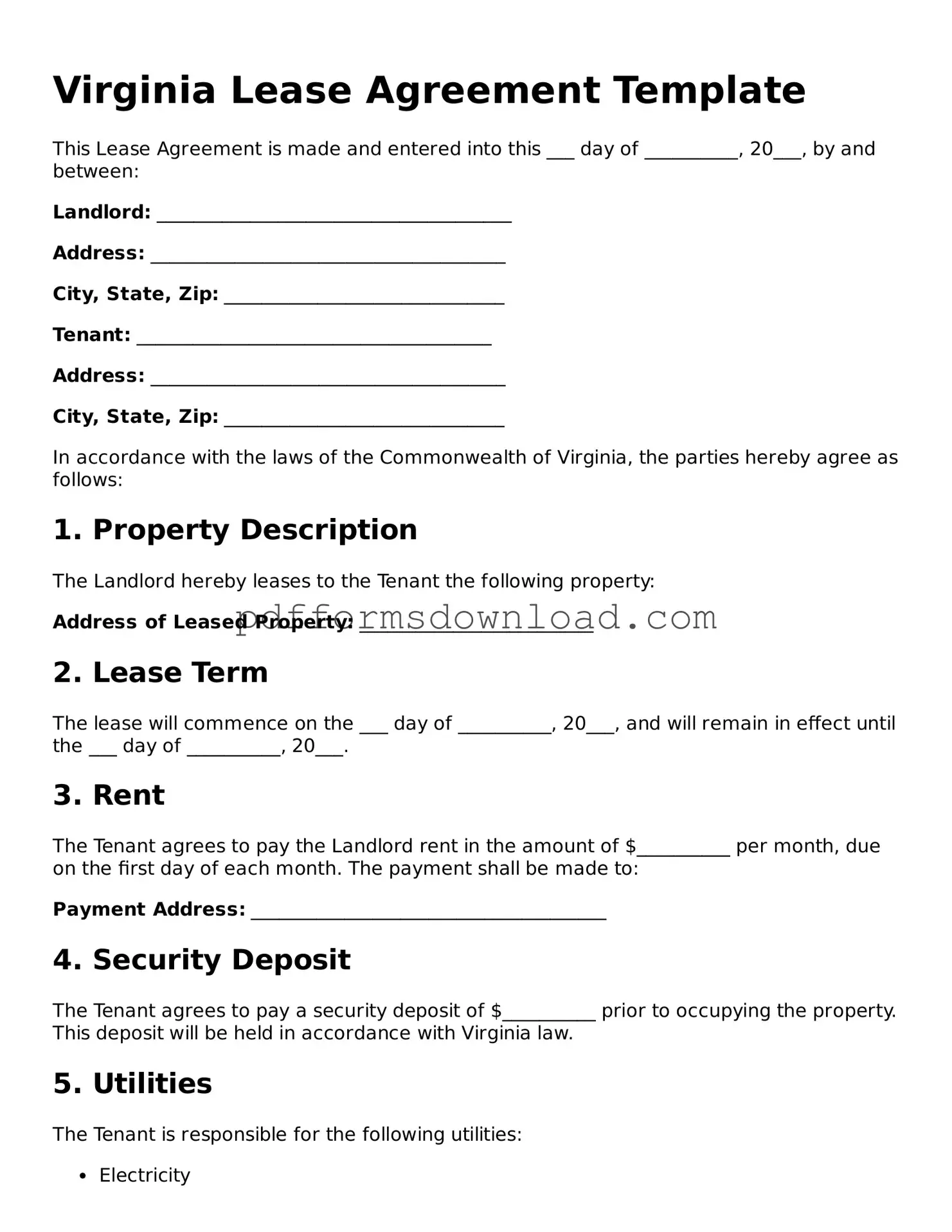What is a Virginia Lease Agreement form?
A Virginia Lease Agreement form is a legal document that outlines the terms and conditions of renting a residential property in Virginia. It serves to protect both the landlord and tenant by clearly defining their rights and responsibilities during the lease term.
What information is typically included in a Virginia Lease Agreement?
Typically, a Virginia Lease Agreement includes the names of the landlord and tenant, the property address, lease duration, rental amount, payment due dates, security deposit details, maintenance responsibilities, and rules regarding pets and subletting. It may also specify termination conditions and any applicable fees.
Is a written lease agreement required in Virginia?
While a verbal agreement may be legally binding, it is highly recommended to have a written lease agreement. A written document provides clarity and can serve as evidence in case of disputes. Virginia law does not mandate a written lease for agreements of one year or less, but it is advisable to have one for any rental situation.
How long is a typical lease agreement in Virginia?
Lease agreements in Virginia can vary in length. Common durations include one year, six months, or month-to-month. The specific term should be clearly stated in the lease. A longer lease may provide stability for both parties, while a shorter lease offers flexibility.
What happens if a tenant wants to break the lease early?
If a tenant wishes to break the lease early, they may be subject to penalties as outlined in the lease agreement. Common consequences include forfeiting the security deposit or paying rent until a new tenant is found. Tenants should review their lease terms and communicate with the landlord to explore options.
Can a landlord increase the rent during a lease term?
Generally, a landlord cannot increase the rent during the lease term unless the lease specifically allows for it. For month-to-month agreements, landlords can raise the rent with proper notice, typically 30 days in Virginia. Rent increases must comply with local laws and regulations.
What is a security deposit, and how is it handled in Virginia?
A security deposit is a sum of money collected by the landlord to cover potential damages or unpaid rent. In Virginia, the maximum security deposit is typically equivalent to two months' rent. The landlord must return the deposit within 45 days after the lease ends, minus any lawful deductions for damages or unpaid rent.
Are there any specific tenant rights in Virginia?
Yes, tenants in Virginia have specific rights, including the right to a habitable living environment, privacy, and protection against unlawful eviction. Landlords must follow legal procedures for eviction and cannot retaliate against tenants for exercising their rights.
What should a tenant do if there are issues with the rental property?
If a tenant encounters issues with the rental property, they should first notify the landlord in writing. The landlord is generally responsible for addressing repairs and maintenance. If the landlord fails to respond, tenants may have legal recourse, including the option to withhold rent or seek repairs through local housing authorities.
Can a lease agreement be modified after it is signed?
Yes, a lease agreement can be modified after it is signed, but both parties must agree to the changes. Modifications should be documented in writing and signed by both the landlord and tenant to ensure clarity and enforceability.
